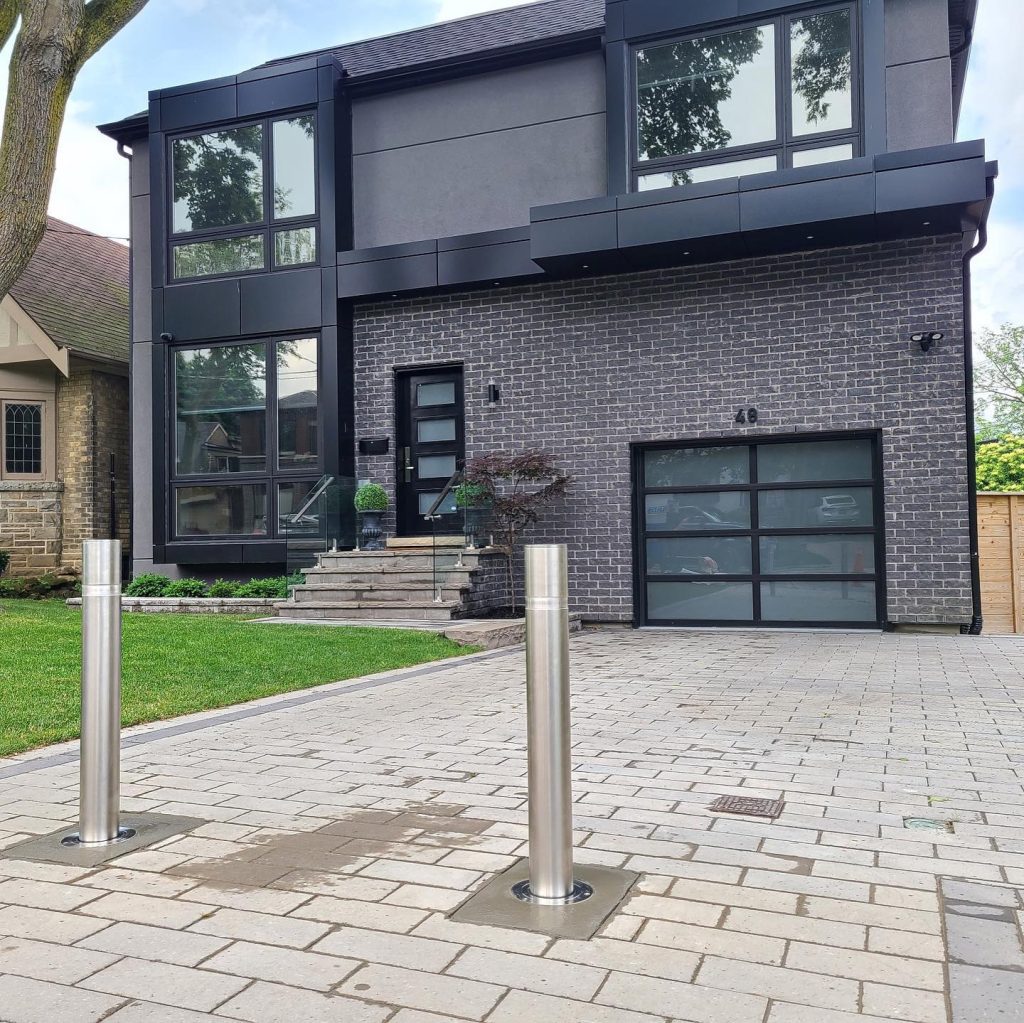
Driveway bollards are popular for homeowners and businesses seeking to enhance security, manage vehicle access, or add an aesthetic touch to their properties. These sturdy posts serve multiple purposes, from preventing unauthorised parking to protecting your property from vehicle intrusion. Understanding the process can help you achieve the best results if you consider installing these bollards. This guide will walk you through the essential steps and considerations for installing driveway bollards, ensuring your project is practical and visually appealing.
Choosing the Right Driveway Bollards
Types of Driveway Bollards
Before diving into the installation process, choosing the right type of bollard for your needs is crucial. Driveway bollards come in various styles and materials, each with its advantages:
- Fixed Bollards: These are permanent installations designed to provide a constant barrier. They are ideal for areas where you need a solid, unmovable obstruction.
- Removable Bollards: For greater flexibility, removable bollards allow you to remove the barrier temporarily. This option is suitable for driveways that occasionally require extra space.
- Retractable Bollards: These can be raised or lowered easily, making them perfect for frequently controlling vehicle access.
Materials and Durability
The material of your driveway bollards will affect both their durability and appearance:
- Steel: Steel bollards are renowned for their robustness and security, making them a preferred choice for high-security applications. They can be painted or coated to match your property’s aesthetics.
- Concrete: Concrete bollards offer a robust and permanent solution. They are ideal for high-traffic areas and can be designed to complement architectural styles.
- Plastic: Plastic bollards are a lighter and more cost-effective option. They are often used in less demanding environments.
Aesthetic Considerations

Driveway bollards can significantly enhance the aesthetic appeal of your property. Consider the following aspects when selecting bollards:
- Design: Choose a design that complements your home or business’s architecture. Bollards come in various shapes and sizes, from traditional to modern.
- Colour: Matching the colour of the bollards with your property’s exterior can create a cohesive look. Some bollards can be painted or customised to fit your design preferences.
Preparing for Installation
Planning the Layout
Proper planning is essential for a successful installation. Start by determining the number and placement of bollards:
- Spacing: Ensure that bollards are spaced evenly to provide adequate coverage. The spacing will depend on their purpose and the size of the area you want to protect.
- Accessibility: Consider how the bollards affect traffic flow and access to your property. Make sure they do not obstruct driveways or pathways.
Gathering Tools and Materials
Before commencing the installation, please ensure you have assembled all required tools and materials:
- Tools: You’ll need a shovel, a level, a tape measure, and possibly a concrete mixer if you use concrete bollards.
- Materials: Depending on the type of bollards you’re installing, you’ll need the bollards themselves, concrete or anchors for securing them, and any additional hardware required for removable or retractable options.
Checking Local Regulations
Before installing these bollards, check with local authorities to ensure compliance with regulations or zoning laws. Some areas may have specific bollard placement or design requirements, and adhering to these regulations can help avoid legal issues.
Installing Driveway Bollards
Marking the Installation Spots
Start by marking the spots where the bollards will be installed. Utilise a tape measure to ensure precise spacing and alignment. Mark the ground clearly to have a guide for digging and placing the bollards.
Digging and Preparing the Holes
For fixed and removable bollards, you’ll need to dig holes to anchor them securely:
- Depth and Width: The holes should be deep enough to accommodate the bollards and provide stability. A general rule is to dig holes that are one-third of the bollard’s height.
- Smooth Edges: Ensure the edges of the holes are smooth to facilitate proper placement of the bollards.
Securing the Bollards
Depending on the type of bollards, the installation process will vary:
- Fixed Bollards: Place the bollards in the holes and fill them with concrete. Use a level to ensure the bollards are upright and straight. Allow the concrete to cure to the manufacturer’s specifications.
- Removable Bollards: Install the base plates into the holes and secure the bollards to the plates. Ensure they fit snugly and check for stability.
- Retractable Bollards: Follow the manufacturer’s instructions for installing the retractable mechanism. Ensure the bollards operate smoothly and lock into place as needed.
Finishing Touches
After the bollards are installed, there are a few finishing touches to consider:
- Inspection: Check the alignment and stability of each bollard. Make any necessary adjustments to ensure they are correctly positioned.
- Maintenance: Regular maintenance will ensure the longevity of your bollards. Inspect them periodically for signs of wear or damage and clean them as needed.
Maintaining Your Driveway Bollards
- Regular Inspections
Regular inspections are crucial for maintaining the effectiveness and appearance of your driveway bollards. Look for signs of damage, rust, or wear, and address any issues promptly.
- Cleaning and Repairs
Keep your bollards clean to maintain their appearance. Use appropriate cleaning agents based on the material of your bollards. Follow the manufacturer’s guidelines or consult a professional for any repairs.
- Upgrades and Replacements
Over time, you can upgrade or replace your bollards. Consider new designs or materials that better meet your needs or enhance your property’s aesthetics. Stay informed about advancements in bollard technology and design to keep your installation up-to-date.
Final Thoughts
Installing driveway bollards can significantly enhance your property’s security and visual appeal. By choosing the right type, carefully preparing for installation, and following proper installation techniques, you can ensure that your bollards serve their intended purpose effectively. Regular maintenance and timely upgrades will keep these bollards in top condition, providing long-lasting benefits. Whether for security, access control, or aesthetics, these bollards are a practical and stylish solution for any property.





